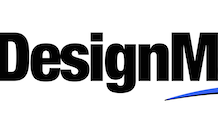Have you swung too far in favour of digital marketing, are you getting lost in a sea of ‘big data’ and trend analysis, or are you looking to inject much needed creativity in to your marketing? According to James De Waal, head of marketing, Business Imaging Group, Canon South Africa, now is the time to add print back in to the mix.
Digital disruption has impacted the way you operate as a marketer in the 21st century. But consumers are undoubtedly becoming tired of the digital overload and they expect more from brands to convince them to part with their hard earned money. It’s no longer feasible to have a ‘digital only’ approach and hope for the best. Creating a timely and meaningful individual experience and inspiring action is the magic key to boosting engagement in your marketing campaigns.
Digital print on-demand combines the targeting capabilities and timeliness of digital marketing with the tactile advantages of print, so you can cut through the noise of the cluttered media landscape and make a real impact.
And if you’re carrying some outdated perceptions of print as being expensive, wasteful and slow, it’s time to realise that print on demand means you can have exactly the number of copies you want, when you want them with no waste, no print inventory to store, and with the scope to change imagery or copy as your campaign evolves or for different target groups.
We’ve outlined seven ways that digital print can add measurable value in your omni-channel marketing campaigns
Gain your consumers’ trust
Brands are overflowing with information about their customers, and digital platforms offer so many ways to transform information into communication immediately and easily. As a result there are a lot of poor quality communications that consumers have to filter through regularly, despite apparently sophisticated algorithms that are designed to do it for them. This erosion of trust has consumers switching off from brands who practice such bad digital behaviour. According to research from the CMO council (1), almost three-quarters (63%) of consumers would respond more positively to a social media ad if it appeared on a more traditional channel.
Command attention
As a result of the rise of digital marketing, evidence suggests that many consumers are going through a ‘digital detox’ and tuning off digital media, for example by using ad-blocking software.
Online advertising has been expanding for 20 years while also becoming less expensive. The consequence is that brands have taken advantage of this and overloaded consumers with messages. Ad blockers, spam filters and opt-outs from e-marketing are commonplace as a result so purely digital messages are not getting through and in some cases, the bombardment is leaving consumers with a negative impression of a brand.
When a well-targeted direct mail piece lands on your doormat, the effect is likely to be more positive. In a 2017 Royal Mail MarketReach study, 70% of people said it makes them feel more valued, and 70% said that mail gives those who receive it a better impression of the organisation. That’s in stark contrast to the millions of digital messages we have all become accustomed to filtering on a daily basis.
Create memories
Consumers spend more time with physical marketing materials and are able to recall them more vividly. The very act of touching a physical piece of print while looking at it – what scientists call ‘haptic communication’ – leaves a deeper footprint in the brain, producing an increased emotional response. Studies by the Royal Mail and the United States Postal Service showed that, ‘The ‘real’ experience that the physical media provides means its better at becoming part of memory’ (2). This ultimately leads to a more positive feeling towards your brand and creates long-lasting loyalty from your consumers.
Complement your online channels
Print can be used alongside digital throughout the entire customer journey. A direct mail can start the conversation or help to re-engage with an individual if they have lost interest over time. Through QR codes or tracked links within direct mailers, customers can be directed to specific destinations online. Triggered mail could then be used to influence their shopping decisions. For example, if a customer has been browsing online and then leaves an item in their basket, brands can identify this inaction and send an automatic, highly personalised promoted mailer to encourage them to complete the purchase.
Printed marketing can even be used post-purchase. For example, when an item is delivered, a printed voucher booklet, mini-catalogue or customer magazine can be included to initiate a new customer purchasing cycle.
Add a personal touch with variable data printing
To grab consumers’ attention, printed materials need be creatively clever as well as being highly targeted. Using variable data to create more personalised communications can offer more effective campaigns, proving a true Return on Investment. For example, one of the largest fashion businesses in Germany, Bonprix, digitally prints personalised covers for its fashion catalogues. Bonprix confirms that more precisely targeted individual offers in printed mailings and catalogues have resulted in a significant increase in response rates.
Be timely and relevant
Print hasn’t historically been considered a reactive medium. By the time you’ve designed, approved, produced and distributed your printed asset, you’ve lost campaign momentum. But what if you could have the best of both worlds — direct marketing campaigns that combine ‘pixels and print’ as close to real time as possible?
This is now viable thanks to ‘Programmatic Print’ which allows a brand to tailor a specific message to their target audience at the best time, all using audience insight about relevant key prospects. This delivers far more precision and personalisation of messaging, resulting in more effective campaigns. The agility of Programmatic Print means that highly personalised materials can be invoked mid-campaign to create that wow-factor and make you stand out from your competition.
The abandoned basket mailer in point four is one example of this in action. When you consider that average abandonment rates are around 69%, costing UK retailers up to R18 billion (£1 billion) on lost sales, automated digital print could almost certainly help to drive conversion.
Bring your campaign to life
Everything you can do online you can now do with print on-demand, which brings into play the full gamut of promotional print applications. From your standard flyer or direct mailer, brochures, catalogues, content rich ‘magalogues’, customer magazines, brand books, customer newsletters, and more. Print offers creative scope far beyond ‘an email in your inbox’, for example using unique formats and textures, to make your campaign stand out from competitors and deliver tangible cut-through.
Today, digital print can replicate all the immediacy of digital marketing and carry individualised messages based on your customer insights, which means you can strengthen against your competition. Brands adopting this dynamic and highly personalised approach to print marketing are already seeing measurable commercial returns, with improved responses to their marketing campaigns and increased sales.
And digital print provides opportunities to drive customer engagement in ways that go far beyond click-through rates. The tactile and physical nature of print means you can connect with your customers and develop more emotional affinity than a digital campaign ever could, giving you a far more valuable outcome – long lasting brand loyalty and advocacy.





















